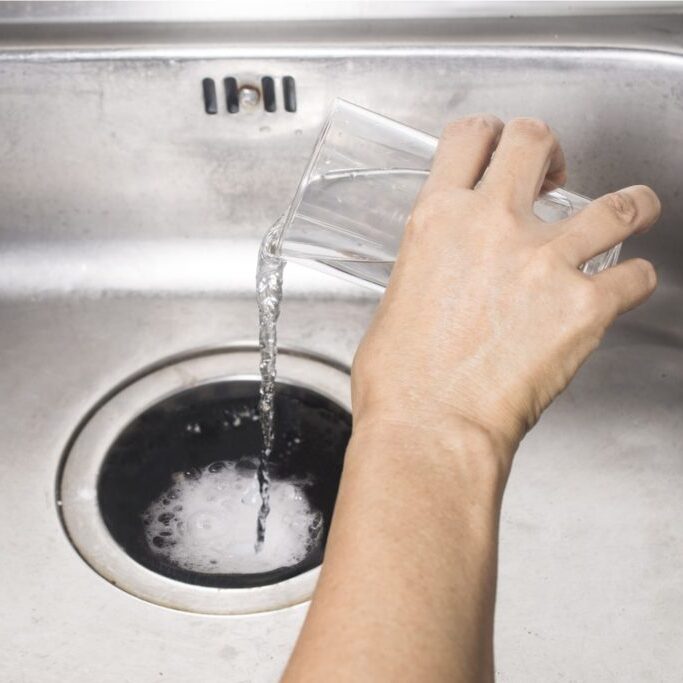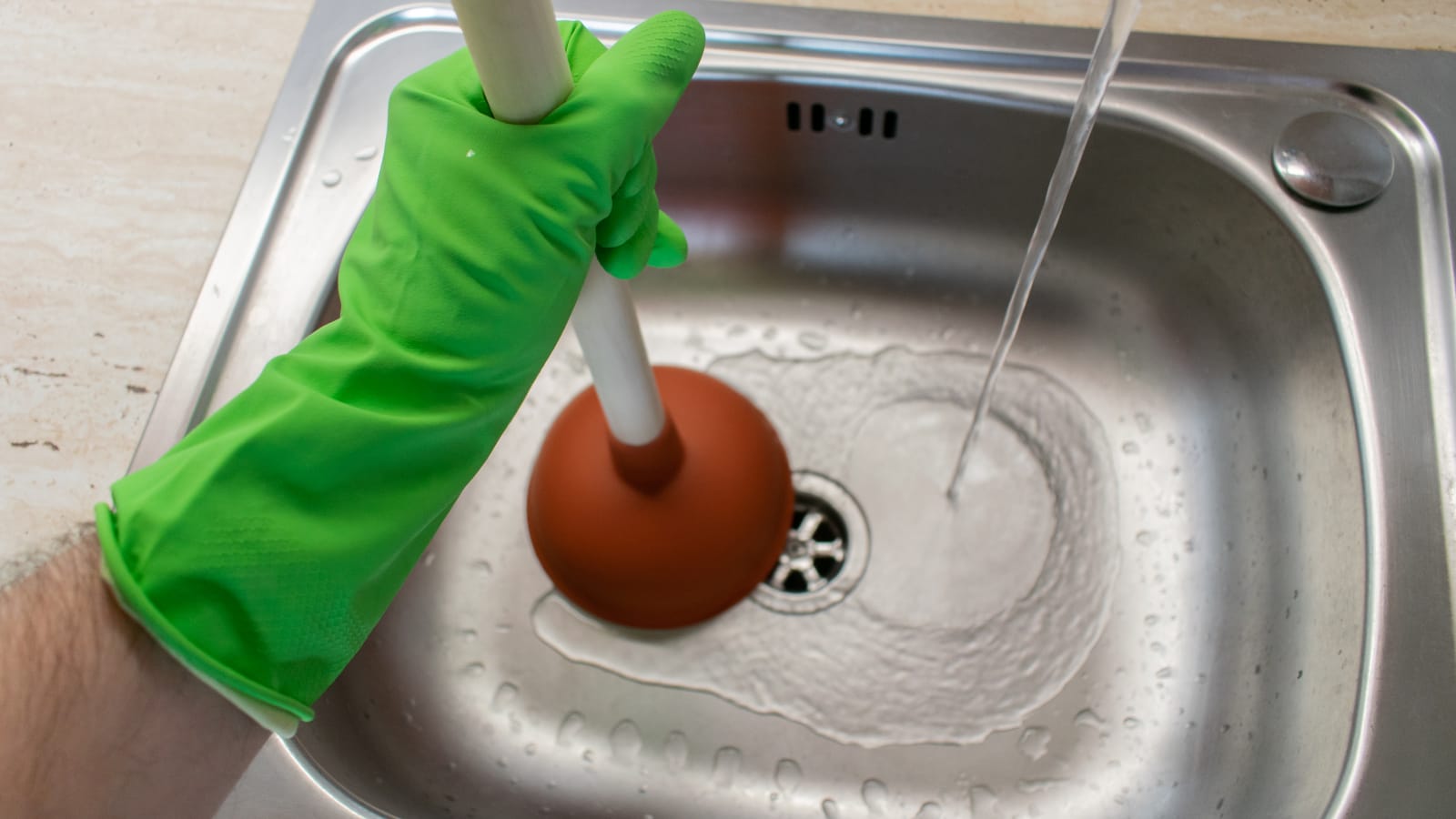Presented here below you will find a good deal of quality details on the subject of Solved! How to Fix a Slow Sink Drain.

Intro
We've all been there: You're brushing your teeth or cleaning your hands, and you observe the water pooling in the sink. Rather than rapidly swirling down the drain, it lingers, transforming your once-refreshing early morning regimen into a small overload scene. A slow-draining sink isn't simply aggravating; it's commonly a sign of larger pipes problems lurking below the surface area. The good news is that most slow-draining sinks can be repaired with a little knowledge, a few fundamental tools, and some patience. All set to tackle this job head-on? Let's roll up our sleeves and dive right in.
Recognizing the Reasons For a Slow-Draining Sink
Prior to you begin poking around in your pipelines, it aids to understand what could be causing the stagnation. Understanding the origin makes it simpler to select the appropriate fix.
Tools and Products You'll Require
The right tools make all the distinction. The good news is, you won't need a completely equipped plumbing's van to do the job.
Step-by-Step Overview to Fixing a Slow-Draining Sink
Now, allow's get into the nitty-gritty. This detailed process will lead you through basic methods to recover your sink's water drainage.
Step 1: Remove and Clean the Stopper
Frequently, the stopper (that tiny plug you lower to block water) is the first wrongdoer. Remove it thoroughly and wipe any kind of hair or gunk caught around its base. Wash it thoroughly before putting it back in place.
Step 2: Utilize a Plunger to Displace Particles
Got that bettor prepared? Placement it over the drain and offer it a couple of company pumps. The idea is to create suction that can loosen any clog. If you see little bits of particles floating up, you get on the best track.
Step 3: Attempt a Drain Snake or Cord Wall Mount
If the plunger doesn't suffice, it's time to highlight the drainpipe snake. Gently feed it right into the drain and twist as you go. You may feel some resistance-- that's likely the clog. Maintain twisting and drawing until you eliminate the blockage. If you do not have a drain serpent, an aligned cable hanger can operate in a pinch.
Tip 4: Use a DIY Drainpipe Cleaner
A natural cleaner made from cooking soft drink and vinegar can break down recurring gunk. Pour half a mug of cooking soft drink into the drain, complied with by half a cup of vinegar. Allow it fizz for around 15 minutes, after that flush with hot water. This chemical reaction frequently does marvels for minor clogs.
Step 5: Rebuild and Examine the Sink
Placed everything back together and run the faucet. Does the water now swirl down the drain at a reputable speed? If yes, provide yourself a pat on the back. If not, don't despair-- there are still a couple of even more tricks up your sleeve.
Vital Tools for Do It Yourself Services
A bettor is your go-to starting factor. A small, sink-sized bettor creates suction that can displace minor obstructions. For more relentless blockages, a drainpipe snake (often called a plumbing technician's auger) functions wonders. A set of gloves, a flashlight, and perhaps a set of protective goggles are likewise handy.
Suggested Cleansing Solutions
Mild meal soap and warm water can aid break down oily accumulation. A blend of baking soft drink and vinegar is a reliable home remedy, and chemical cleansers use an even more environment-friendly strategy. Keep chemical drainpipe cleaners as a last option, as they can be rough on your pipelines.
Common Perpetrators Behind Slow Water Drainage
So, what's obstructing points up? Typically, it's a mixture of everyday debris-- believe hair, soap scum, tooth paste residue, and remaining food fragments. Gradually, these tiny bits accumulate and hold on to the pipeline walls, progressively tightening the passage and making it harder for water to travel through. In many cases, natural resource from hard water can additionally contribute to the crud, producing the perfect tornado for persistent clogs.
When is it Time to Do Something About It?
If you notice the water draining pipes slower than normal, it's a great idea to interfere earlier instead of later. Waiting also long might lead to complete clogs, undesirable odors, and even pipeline damages. If the water takes greater than a few secs to clear out after switching off the tap, consider it a red flag and prepare to place on your do it yourself hat.
Safety And Security First: Precautions and Preparations
Before you launch into unclogging mode, think about safety. You're handling potentially dirty water and debris, so slip on a pair of gloves. If you're making use of chemical cleansers, make certain the space is well-ventilated and adhere to the guidelines on the tag.
Safety Equipment and Workspace Configuration
Lay down some old towels or rags around the sink area to catch dashes. Remove any products that could get in your means, like soap dispensers or toothbrush holders. Make certain you have good lights-- order a flashlight if required.
Alternative Techniques for Stubborn Clogs
Not all obstructions are created equal. If your sink still rejects to work together, take into consideration these alternative solutions.
Baking Soda and Vinegar Technique
We already discussed this, however it deserves keeping in mind once again. This mild, green approach is more secure than chemical cleaners and often rather efficient.
Chemical Drain Cleaners
Enzyme-based cleaners utilize all-natural bacteria to absorb raw material. They're an excellent choice if you're aiming to prevent extreme chemicals. Simply remember, they may take a bit longer to work their magic.
Chemical Drainpipe Cleaning Company: Pros and Cons
Chemical cleaners can blast through challenging blockages quick, yet they're not without disadvantages. They can produce warm and fumes, damages pipes if used excessively, and present environmental risks. Use them moderately, and constantly comply with the directions carefully.
Safety Nets to Maintain Your Sink Flowing
Prevention is the best remedy. By embracing a couple of easy habits, you can maintain your sink from slowing down to begin with.
Routine Cleaning Up Practices
Wipe down the sink basin and component location frequently. Remove hair or food bits before they have a chance to wash down the drainpipe.
Staying Clear Of Damaging Substances Away
Hesitate prior to discarding coffee premises, grease, or fibrous vegetable scraps down the sink. These wrongdoers hold on to pipeline wall surfaces, developing obstructions gradually.
Regular Maintenance Checks
Set up a fast regular monthly examination. Run hot water through the sink for a few minutes, taking notice of the circulation. If it appears sluggish, act fast prior to it becomes a full-blown clog.
When to Call an Expert Plumbing Professional
In some cases, no matter just how difficult you try, that obstruct just won't budge. That's when it's time to bring in the pros.
Indicators That Suggest a Much More Severe Problem
If your sink drains pipes slowly regardless of numerous efforts, or if you see water backing up in various other components (like your shower or toilet), you may have an extra severe plumbing concern lurking much deeper in the system.
Balancing Do It Yourself Initiatives with Expert Help
While do it yourself can conserve you cash and supply a feeling of achievement, there's no pity in calling a professional. A specialist plumbing can examine your entire plumbing arrangement, guaranteeing there's no underlying damage or lasting problem that might cost you much more later on.
Contrasting Costs and Long-Term Solutions
Before making a decision, take into consideration the big picture. A cheap, quick fix could solve the trouble briefly, yet buying a much more permanent remedy could conserve you money and tension in the long run.
Considering the Costs of DIY vs. Expert Solutions
Do it yourself fixes commonly cost little bit greater than the rate of a bettor or a container of cooking soft drink. Expert services, on the other hand, included a cost but might stop repetitive issues and expensive repairs later.
Investing in Top Quality Fixtures and Upgrades
If your sink's layout adds to constant blockages, it might be worth updating to higher-quality components or modifying the pipes design. Consider this a financial investment in your home's capability and comfort.
Conclusion
A slow-draining sink can seem like a minor inflammation, yet it's commonly a sign that your pipes needs a little tender loving care. By understanding the source, using the right tools and strategies, and devoting to basic safety nets, you can maintain your sink moving freely. And when all else fails, never hesitate to call in a professional-- your home's pipes is worth the investment in care and upkeep.
Three Common Ways to Fix a Slow Drain
Baking Soda Method
Boil a full pot of water. Measure out cup of baking soda and pour it down the drain. Then take cup of the magical cleansing substance known as white vinegar and drop that down there too. Allow the mixture to fizz in the drain for five minutes as the vinegar and baking soda combine. Now dump in that whole pot of boiling water. This combination of cleaning substances should clear out anything that is causing your sink to drain slowly. If it doesn t...
Zip-It
If the baking soda method doesn t clear out your drain, it may be because a significant amount of hair and/or other debris has collected there and you need to remove it. Purchase a Zip-It tool at any home improvement or hardware store and insert it into your drain. It will catch any collected hair or debris that s blocking the flow of water. Pull it out. If it s got a big clump of hair, etc. on the end, you ve probably got your culprit.
Drain Cleaner
If these methods don t work, there is the standard drain cleaner that you can also buy in a hardware store or even your local grocery store. It s better if you can use a household solution, but these drain cleaners often work in a pinch. They re very simple to use. You generally just dump them in your drain and wait. If even this method is not effective, it may be time to call the plumber.
https://www.mrrooter.com/oneida/about-us/blog/2017/july/three-common-ways-to-fix-a-slow-drain/

I found that piece about 4 Tips to Fix a Slow Draining Sink while doing a search on the web. Do you know about somebody who is enthusiastic about the niche? Please feel free to share it. Thank-you for taking the time to read it.
Get Started
Comments on “Techniques To Resolve A Slow-Draining Sink”